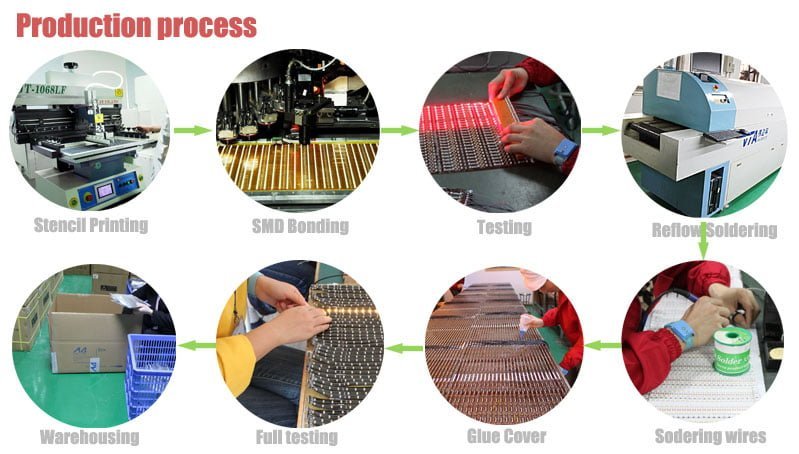2-3 years warranty for most of our products.
Sea: seaport to seaport, cheap, long time, suitable for big volumn orders
Air: airport to airport
Global express DHL, UPS, FEDEX, EMS, TNT: door to door, mostly used
Kinds of Post air mail etc: for small packages below 2Kg, very slow.
T/T bank transfer, West Union and Paypal, Even Escow If you order in our aliexpress store.
The lead time 3-7 working days for sample, and 7-15 working days for bulk order. Sometimes it is shorter or longer according to stock and quantity. And shipping time is around 5-30 working days depends on shipping methods you choose.
Of course, we provide OEM and ODM service, design and produce according to customers’ requirement. Such as different length, different voltage of led strip, different sizes of led panel, tube; special material for some lights etc.
LED Lightings are becoming more and more popular in many industries. Innovative LED technology has opened new avenues with dynamic colour mixing and colour sequencing capabilities. These new capacities coupled with their small size and system flexibility make LED lamps ideal for a variety of applications where in the past, traditional light sources have been used.
Indicator lights
Back lighting
RESIDENTIAL Lighting
COMMERCIAL Lighting
Street and outdoor lighting
Decorative lighting
Signage and advertising
Architectural Lighting
Automative lighting
Agriculture
Medical
Beauty
Stage
Others
• The thermal management of the LEDs. If LEDs come on a standalone chip, appropriate heat sinks have to be designed to prevent premature failure of LEDs.
• The electrical stress: Running LEDs at currents higher than specified make the LED run hot. This can happen with wrongly matched drivers.
• Higher ambient temperatures than that for which the product is rated reduces the life of the LEDs.
Useful life has been defined as the number of hours an LED device can operate until it emits only a certain percentage of its original lumen output. For general illumination applications, vision research suggests that 70 percent of original lumen output is the level where end users begin to notice a drop in light levels.
Most insects are primarily attracted to Ultra-violet rays to help them forage, navigate and select mates. LEDs do not have UV content and hence do not attract so many insects compared to conventional light sources.
LEDs are more efficient than most other light sources, so they usually consume less energy for a given task or light output. Also, they do not contain hazardous materials such as toxic mercury. Moreover, LEDs have a longer lifespan and hence reduce the frequency of disposal of old lamps.
the percentage of initial light output produced by a light source at some percentage of rated useful life (usually 100% for LED and 40% for source types characterized by sudden failure).
color rendering index; a measure of how a light source renders colors of objects, compared to a “perfect” reference light source. CRI is given as a number from 0 to 100, with 100 being equivalent to the reference source.
correlated color temperature; a measure of the color appearance of a white light source. CCT is measured on the Kelvin absolute temperature scale. White lighting products are most commonly available from 2700K (warm white) to 7000K (cold white).
-Energy Saving.
-Instant Start: instantly acheives full brightness with no warm up time.
-No mercury: Led lighting contains no mercury or other dangerous substances.
-Green, Environmentally friendly
-Low maintenance and replacement cost
-Long Lifetime as long as 50,000 hours.
Light emitting diodes (LED’s) are semiconductor diodes, electronic devices that permit current to flow in only one direction. It is kind of solid state semiconductor device that converts electrical energy directly into light.

